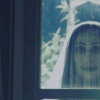Is there an onion skin for animation?
 James
Posts: 1,103
James
Posts: 1,103
Is there an onion skin for animation?
I think they who into animation know what onion means in this context.
Post edited by James on


Comments
I assuem you mean onion-slin, being able to see frames layered on top of each other, rather than onion (though if I am wrong Fluidos would be the answer). Daz Studio doesn't have such a feature (currently, and nothing has been said to indicate that Daz or a PA are adding it).
If you mean onion skinning, or motion blur alike, you may take a look at this - https://www.daz3d.com/motion-blur-for-iray. Curtainly you can manually do those 'overlays' with transparency on the timeline, but that'll be a bit cumbersome.
Light Table, also called Onion Skinning is an animation term for seeing past and future frames as we work.
PD Howler has a nice feature like that called Light Table. What's more is that we can set it to show the doppler effect - red for previous frames, blue for frames ahead.
if this is like a storyboard I personally dislike that type of interface
but I hate nodes too and everyone gushes about those
It's not like a dope sheet, if that's what you mean. Howler can convert dope sheets to animated frames and the other way around, but the Light Table/Onion Skin just shows a "ghost" image of the frame(s) before and after the current frame, so we can judge what to do on the frame we're currently on.
Regarding Nodes:
Nodes are basically the tools that we use within an interface, but separated out. Well... it's actually the other way around. The nice part about nodes is that we can order them in many ways - unlike using the same tools within an interface, which often only has a limited number of ways to use that particular function. So... yes, I am a fan of nodes in many cases - Fusion especially.
If we look at the shaders we use every day, they are actually an incredible array of nodes connected in crazy-genius ways to make them work so easily withinj the interface known as the Surfaces pane. An artist knowing what those nodes are and how to use them can really get artistic in their creation - making all new shaders. V3Digitimes' Wet and Tan Skins uses a whole new shader that adds another layer for the wetness that can be controlled independently from the rest of the same shader. So I'm assuming that she knows how to work the magic of that system. I plan to have a look at that in the future. Like in OctaneRender, I really like being able to push the limits. Nodes helps reduce limits as they can be used in so many directions.
oh I googled it
it"s a 2D animation thing like in OpenToonz, Clip Studio/Moho/Anime Studio etc
also layers in image editors creating animated gifs, I have used this technique in Gimp
Dan Ritchie, author and developer of Project Dogwaffle used to be in the VFX industry and put a Lot of that sort of workflow into Howler. He's still busy - constantly writing new code to further improve it and add new functionality. Amazing what he gets done all by himself! Philip Staiger (previously from Eovia) and Tiffanie Gray (for the 2D artistic painting side of things) are constantly offering new challenges for him - and he's an amazing artist himself.
Painting and sketching in Project Dogwaffle 'feels' like doing the real thing, which I love even though I mostly use PD Howler for its many animation tools - making VFX as well as compositing them.